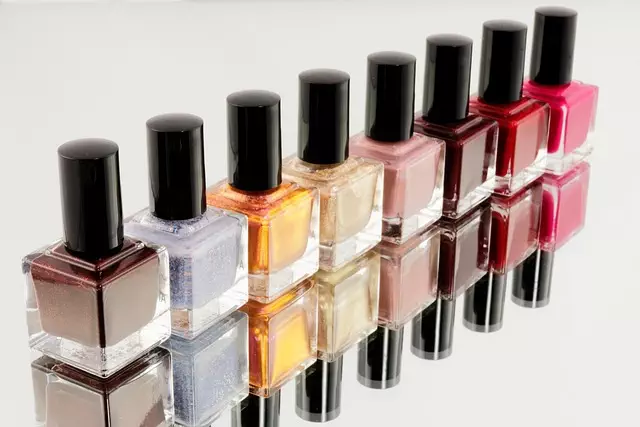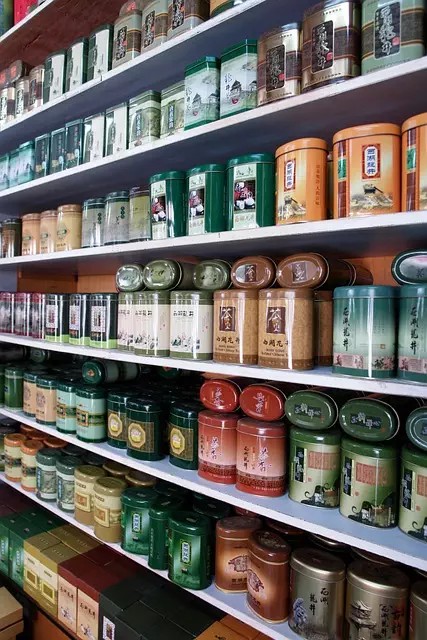The beauty industry is shifting towards sustainable cosmetic packaging, driven by environmental awareness and consumer demand for eco-friendly options. Brands are exploring custom cosmetic packaging using innovative materials like biodegradable plastics, plant-based resins, and recycled fibers to reduce waste, minimize resource consumption, and promote recyclability. This trend aligns with regulatory standards while appealing to environmentally conscious consumers, fostering brand loyalty, and offering a competitive edge in the market. Customization allows brands to express their identity uniquely, engage customers, and differentiate themselves through visually appealing and sustainable packaging solutions.
In today’s competitive market, cost-effective cosmetic packaging is not just a trend but a necessity. As consumers demand more eco-friendly products, brands are exploring sustainable cosmetic packaging solutions that align with their values and appeal to their target audience. This article delves into the various aspects of creating efficient cosmetic packaging, including the shift towards eco-friendly materials, customization for brand differentiation, production optimization, regulatory compliance, and consumer preferences driving market trends. Discover how these elements shape the future of cost-effective and custom cosmetic packaging solutions.
- Understanding Cost-Effective Cosmetic Packaging: The Need for Sustainable Solutions
- Exploring Eco-Friendly Materials: A Shift towards Sustainable Cosmetic Packaging
- Customization in Cosmetic Packaging: Unlocking Brand Identity and Customer Engagement
- Optimizing Production Processes: Cost Savings through Efficient Manufacturing Techniques
- Regulatory Compliance and Packaging Innovation: Navigating Industry Standards
- Consumer Preferences and Market Trends: Shaping the Future of Cost-Effective Cosmetic Packaging
Understanding Cost-Effective Cosmetic Packaging: The Need for Sustainable Solutions

In the ever-evolving beauty industry, where trends come and go, one constant remains: the need for effective and appealing cosmetic packaging solutions. However, beyond aesthetics lies a growing imperative for sustainable cosmetic packaging—a shift driven by environmental concerns and consumer demand. Brands are increasingly recognizing that their packaging choices have significant impacts on both the planet and society. This understanding has prompted a search for cost-effective cosmetic packaging options that balance quality, functionality, and eco-friendliness.
Custom cosmetic packaging plays a pivotal role in this transition. By embracing innovative materials and design strategies, manufacturers can reduce waste, minimize resource consumption, and promote recyclability. Sustainable cosmetic packaging isn’t just about aesthetics; it’s a statement of corporate responsibility, appealing to environmentally conscious consumers. This shift demands creative solutions that don’t compromise on brand identity or product quality, ensuring both cost-effectiveness and environmental stewardship.
Exploring Eco-Friendly Materials: A Shift towards Sustainable Cosmetic Packaging

The beauty industry is undergoing a significant transformation as consumers become increasingly conscious of the environmental impact of their purchases. This shift has led to a growing demand for sustainable cosmetic packaging solutions that not only reduce waste but also minimize the use of non-biodegradable materials. Many brands are now exploring eco-friendly alternatives, such as biodegradable plastics, plant-based resins, and recycled fibers, to create custom cosmetic packaging that aligns with their commitment to sustainability.
This transition towards sustainable cosmetic packaging is not just a trend; it’s a necessity. By adopting these innovative materials, cosmetic companies can contribute to a greener planet while appealing to environmentally aware consumers. Custom cosmetic packaging designed with sustainability in mind offers brands an opportunity to stand out in a crowded market, differentiate their products, and build a positive brand image that resonates with modern consumers’ values.
Customization in Cosmetic Packaging: Unlocking Brand Identity and Customer Engagement

Customization in cosmetic packaging plays a pivotal role in unlocking brand identity and fostering customer engagement. By incorporating unique designs, shapes, and materials, brands can create visually appealing and distinctive packages that stand out on retail shelves. Custom cosmetic packaging solutions allow companies to convey their brand story, target audience, and product benefits effectively, thereby attracting and retaining customers.
Sustainable cosmetic packaging is another crucial aspect that brands are increasingly focusing on. Eco-friendly materials like biodegradable plastics, paper, and glass not only reduce environmental impact but also appeal to environmentally conscious consumers. Customization in this context can involve using sustainable materials while still maintaining brand aesthetics, ensuring both visual appeal and ethical production practices. This approach helps build a positive brand image and strengthens customer loyalty over time.
Optimizing Production Processes: Cost Savings through Efficient Manufacturing Techniques

In the quest for cost-effective cosmetic packaging, optimizing production processes is a strategic move that offers significant savings. Efficient manufacturing techniques play a pivotal role in reducing expenses associated with cosmetic packaging solutions. By implementing streamlined methods, brands can enhance productivity while minimizing waste, leading to more affordable pricing without compromising quality. This approach is particularly beneficial for small businesses and startups entering the market with limited budgets.
Sustainable cosmetic packaging has also gained traction as an eco-conscious alternative, allowing manufacturers to reduce costs in the long run. Custom cosmetic packaging, when designed with sustainability in mind, can be both aesthetically pleasing and environmentally friendly. Techniques such as recycling, upcycling, and using biodegradable materials not only appeal to eco-conscious consumers but also offer financial advantages, ensuring a competitive edge for brands committed to producing environmentally sound products.
Regulatory Compliance and Packaging Innovation: Navigating Industry Standards

The cosmetics industry is subject to stringent regulatory standards, ensuring product safety and quality. Manufacturers must adhere to guidelines for material composition, labeling, and testing, which can influence packaging design. Navigating these regulations is essential for introducing innovative and cost-effective cosmetic packaging solutions. One approach is to adopt sustainable cosmetic packaging practices, utilizing eco-friendly materials and reducing waste, while still meeting regulatory requirements.
Custom cosmetic packaging plays a pivotal role in differentiating brands and catering to specific product needs. By combining creative design with regulatory compliance, manufacturers can develop unique packaging that enhances brand identity and consumer experience. This involves selecting appropriate materials, implementing efficient production processes, and ensuring the packaging’s structural integrity, all while keeping costs manageable for various cosmetic product lines.
Consumer Preferences and Market Trends: Shaping the Future of Cost-Effective Cosmetic Packaging

In today’s market, consumer preferences and trends are rapidly evolving, influencing the demand for innovative and cost-effective cosmetic packaging solutions. Sustainability has become a key focus, with an increasing number of consumers opting for eco-friendly and sustainable cosmetic packaging options. This shift towards green practices is not just a trend but a growing responsibility among brands to reduce their environmental impact. As such, many cosmetic companies are now exploring alternatives to traditional materials, such as biodegradable or recyclable options, which can lower production costs while appealing to environmentally conscious consumers.
Additionally, the rise of custom cosmetic packaging has gained traction due to its ability to enhance brand identity and personalize customer experiences. Consumers appreciate unique and visually appealing packaging designs that reflect the values and essence of a brand. Customization allows businesses to stand out on crowded shelves and cater to individual consumer preferences. This trend is particularly prominent among younger demographics, who are often early adopters of new technologies and packaging innovations. As a result, cosmetic brands have an opportunity to engage with their target audience by offering sustainable cosmetic packaging solutions that are also aesthetically pleasing and tailored to specific product needs.


